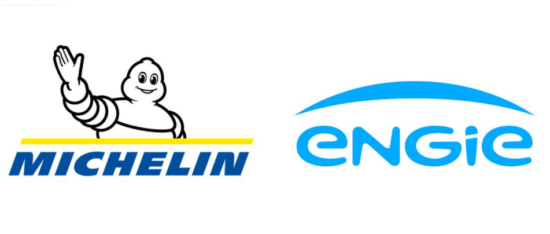Michelin decarbonising Cataroux site in France

Michelin has chosen utility firm Engie to optimise energy consumption at its Cataroux site in Clermont-Ferrand, France, and hence strongly reduce its greenhouse gas emissions. In addition to managing utilities such as steam, heating, chilled water and compressed air, the ten-year contract provides for the design and operation of new energy facilities and the installation of a waste heat recovery system. This untapped energy source will meet heating needs at the site – which houses a tyre factory and L’Aventure Michelin, the company’s museum – along with those of 4,000 homes through a connection to the city’s heating network.
By modernising production with low-consumption and efficient equipment and optimising its energy needs, Engie’s input will allow Michelin to lower its energy consumption while also reducing its greenhouse gas emissions. The site can expect to save 50 per cent in natural gas consumption and 13 per cent in water consumption.
A major part of the contract involves installing a system to recover waste heat from the industrial process and then re-inject it into the Clermont-Auvergne-Métropole heating network, to which the site will be connected. Through its subsidiary ECLA, Engie has held the public service concession for the management and operation of this heating network since 2010.
With this connection, Michelin will decarbonise its own energy consumption as well as that of the heating network. In winter, heat recovered from tyre manufacture will allow self-sufficient heating of the site. Throughout the year, surplus heat will be injected into the ECLA network, representing the annual heat consumption of 4,000 homes and abating the emission of 7,000 tonnes of CO2.
In line with plan for a sustainable everything
“The constant search for ways to improve our response to our ‘All-Sustainable’ commitment naturally led us to choose Engie to optimise the energy efficiency of our Cataroux site,” comments Frédéric Lorphelin, director of the Cataroux site. “By 2030, Michelin aims to reduce its water intake by 33 per cent compared with 2019, to reduce the CO2 emissions of its industrial sites by 50 per cent from 2010 levels and to achieve carbon neutrality by 2050. With this environmentally friendly project, Cataroux ensures its energy and ecological transition in the long-term while contributing to the region’s decarbonisation. This major step is fully in line with the strategic plan to ensure that everything at Michelin will be sustainable in the future.”
“We are proud to be contributing to the decarbonisation plan at Michelin, an iconic French industrial group that, like Engie, is resolutely committed to the reduction of CO2 emissions,” adds Cécile Prévieu, Engie’s executive vice-president in charge of energy solutions activities. “Our expertise in low-carbon infrastructure management is reflected here in the creation of a local energy loop that is both green and innovative, demonstrating the responsibility of industry at the heart of the region.”



Comments